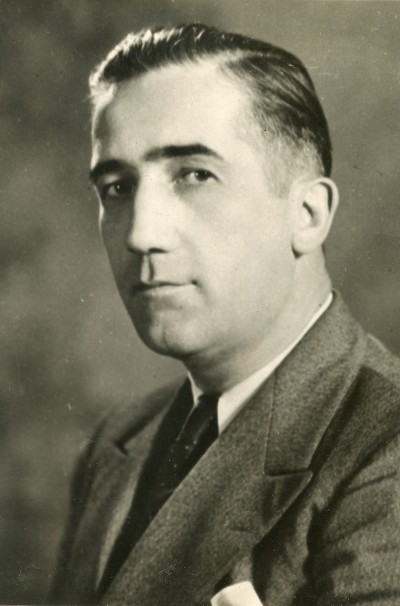Ray Watts graduated from Otterbein in 1918 and then immediately accepted the challenge of overseeing all Cardinal sport programs. Nicknamed “Scuffy” during his time as a basketball student-athlete, he transitioned to a 24-year old administrator and served as not just Athletic Director, but coach for ALL teams. His salary was $1,000 per year. He led the men’s basketball program for just one season (1919-20), compiling a 7-6 record to mark the only winning campaign in a decade span from 1915-25. Watts then moved to Cleveland and coached high school until 1926, when he took over Cleveland’s first-ever professional football team, the Panthers. The highlight occurred when his club defeated Red Grange’s in front of 22,000 fans.
Watts began his legendary career at Baldwin Wallace in 1928 as the Athletic Director, football coach and basketball coach. He became the face of the Yellow Jackets for the next 32 years, building the athletic programs as a true leader and symbol of progress. Watts hoisted BW’s football team out of the basement, guiding the program to a 104-54-14 record over 20 years in charge and becoming nationally recognized as the creator of the “Aerial Circus.” The Yellow Jackets led the nation in scoring for the 1935 and 1936 seasons, which included a massive 19-7 upset over powerful Syracuse in a game where BW was expected to lose by around 40 points.
Working with a male enrollment of some 300, Watts also served three different stints as taskmaster of the BW basketball program for 1928-35, 1940-41 and lastly from 1952-58. His teams were perennial powers at various times as the Jackets went a combined 246-182 under his guidance. He simply did it all, earning another degree in 1933 and also coaching the baseball team over an eight-year span. He stepped down from coaching for good in 1958, the 30-year anniversary of when he arrived to Berea. At that year’s Homecoming, more than 100 former players returned to celebrate and wrote letters that were bound in book form and presented to Watts. Among the most constant theme was the ways in which Watts never let his players satisfy for mediocrity, and how it benefited them in life after college.
Watts officially retired as Athletic Director in 1960, capping a decorated professional run where he seemed to get the most out of everyone through a combination of firmness and gentleness. He was part of Baldwin Wallace’s first Athletic Hall of Fame class in 1965.
Watts passed away in 1968, at the age of 73, but his impact will forever be remembered by family, friends and all those who associated with him through athletics.


